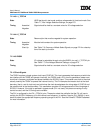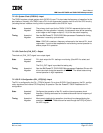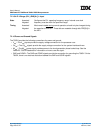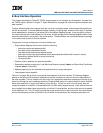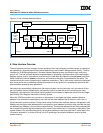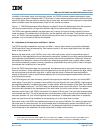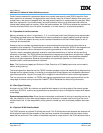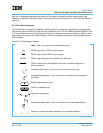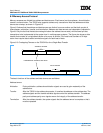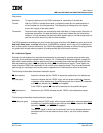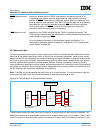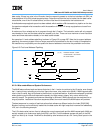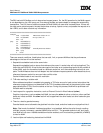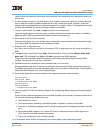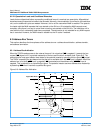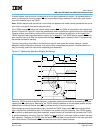
User’s Manual
IBM PowerPC 750GX and 750GL RISC Microprocessor
Bus Interface Operation
Page 284 of 377
gx_08.fm.(1.2)
March 27, 2006
8.2 Memory-Access Protocol
Memory accesses are divided into address and data tenures. Each tenure has three phases—bus arbitration,
transfer, and termination. The 750GX also supports address-only transactions. Note that address and data
tenures can overlap, as shown in Figure 8-3.
Figure 8-3 shows that the address and data tenures are distinct from one another and that both consist of
three phases—arbitration, transfer, and termination. Address and data tenures are independent (indicated in
Figure 8-3 by the fact that the data tenure begins before the address tenure ends), which allows split-bus
transactions to be implemented at the system level in multiprocessor systems. The figure also shows a data
transfer that consists of a single-beat transfer of as many as 64 bits. Four-beat burst transfers of 32-byte
cache lines require data-transfer termination signals for each beat of data.
The basic functions of the address and data tenures are as follows.
Address tenure:
Figure 8-3. Overlapping Tenures on the 750GX Bus for a Single-Beat Transfer
Arbitration During arbitration, address-bus arbitration signals are used to gain mastership of the
address bus.
Transfer After the 750GX is the address-bus master, it transfers the address on the address bus. The
address signals and the transfer attribute signals control the address transfer. The address
parity and address-parity error signals ensure the integrity of the address transfer.
Termination After the address transfer, the system signals that the address tenure is complete or that it
must be repeated.
ARBITRATION TRANSFER TERMINATION
ADDRESS TENURE
ARBITRATION SINGLE-BEAT TRANSFER TERMINATION
DATA TENURE
INDEPENDENT ADDRESS AND DATA



